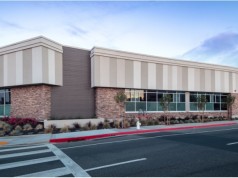California housing affordability continues to decline
WASHINGTON, D.C. – October 21, 2015 – (RealEstateRama) — The percentage of home buyers who can afford to purchase a median-priced home in California is declining. The sharp increase in housing demand has led to skyrocketing home prices, shutting out a large percentage of the potential home buyers. The latest California Association of REALTORS® housing affordability report indicates every region in the state, except Kings County, posted lower affordability in the second quarter compared to the previous quarter.
According to C.A.R.’s Traditional Housing Affordability Index, 30 percent of California households could afford to purchase the $485,100 median-priced home in the second quarter of this year, down from 34 percent in first-quarter 2015 and unchanged from 30 percent in second-quarter 2014. A minimum annual income of $95,980 was needed to make monthly payments of $2,400, including principal, interest, and taxes on a 30-year fixed-rate mortgage, assuming a 20 percent down payment, at 3.95 percent interest rate.
In Silicon Valley, housing affordability has approached a “critical” level, according to housing experts. In Santa Clara County, only 19 percent of households could afford to purchase a $980,000 median-priced home in the second quarter, down from 22 percent in the previous quarter and unchanged from second-quarter 2014. Home buyers needed a minimum qualifying annual income of $193,890 to make monthly payments of $4,850.
In San Mateo County, the housing affordability level dropped to 13 percent from 14 percent in first-quarter 2015 and second-quarter 2014. A minimum annual income of $257,210 was needed to make monthly payments of $6,430 on a $1,300,000 median-priced home.
“The housing affordability problem is of serious concern in our region. Not only are homes beyond the reach of the average home buyer, but rents have also skyrocketed to unaffordable levels, as well,” said Chris Isaacson, president of the Silicon Valley Association of REALTORS®. “The irony is Silicon Valley is experiencing solid economic growth. Companies are growing and expanding. They are hiring more workers and leasing more office space, but the growth has surpassed incomes of the middle class and working class. When the median-priced home is reaching the million-dollar mark, and it has in San Mateo County, I would say housing has become a critical issue that needs to be addressed.”
Isaacson said the housing problem did not just happen overnight and is a result of decades of under building. “The state has failed to keep up with the housing demand for years,” said Isaacson.
Already last year, C.A.R. projected the state needs at least 165,000 new units a year to meet the state’s demographic demand. According to the California Employment Development Department, the state added 22,900 jobs in June for a total gain of 1.95 million new jobs since the recovery began in February 2010. Since last year there have been over 100,000 new jobs added to the Bay Area and only about 8,000 new housing units constructed.
“There’s just no way around it. We need to build more housing,” said Isaacson.
The Silicon Valley Association of REALTORS® (SILVAR) is a professional trade organization representing over 4,000 REALTORS® and Affiliate members engaged in the real estate business on the Peninsula and in the South Bay. SILVAR promotes the highest ethical standards of real estate practice, serves as an advocate for homeownership and homeowners, and represents the interests of property owners in Silicon Valley.
The term “REALTOR®” is a registered collective membership mark which identifies a real estate professional who is a member of the National Association of REALTORS® and who subscribes to its strict Code of Ethics.
Variations of this article have appeared in local area newspapers.
For further information, please contact Rose Meily at SILVAR Public Affairs, e-mail , or phone (408) 200-0109.















